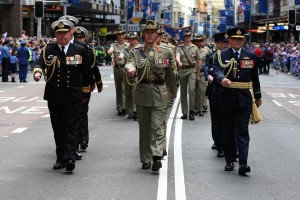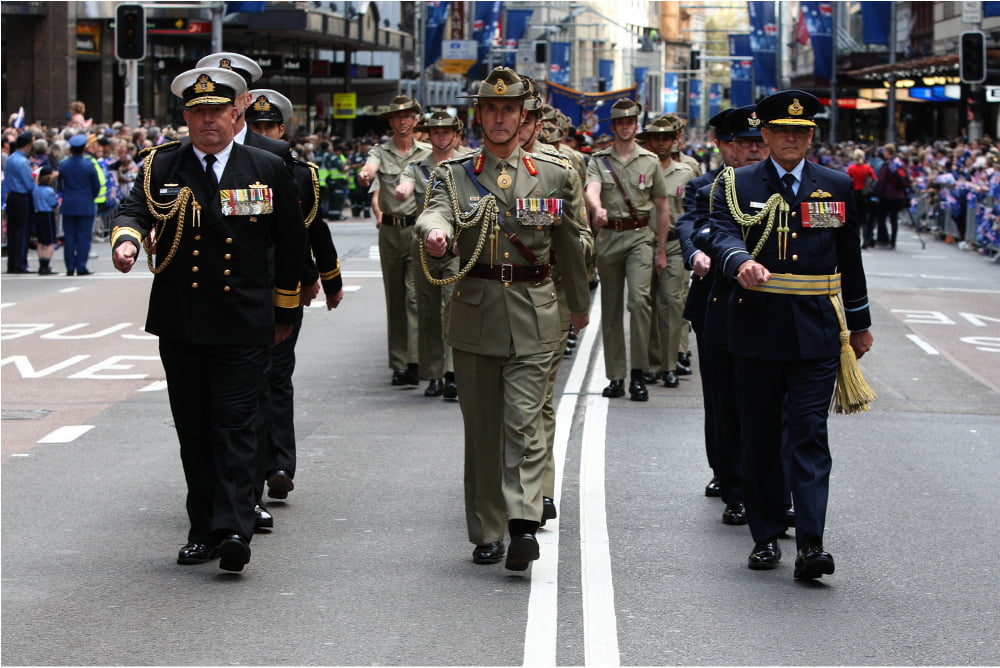2015-08-27 By Robbin Laird
During my visit to Australia in August 2015, I had a chance to visit Royal Australian Air Force squadrons as well as interview senior RAAF officers, including the Air Commander Australia, Air Vice Marshal Turnbull.
The role of the Air Vice Marshal is to command and manage the RAAF’s raise, train and sustain activities across various force element groups, which provide for the operational capability for assignment to operations. Air Command represents the bulk of the RAAF.
Air Commander Australia – Royal Australian Air Force
Obviously, he is looking at the transformation approach of the RAAF from the standpoint of current operations and his ability to meet the operational demands and needs of the RAAF and Joint Commanders.
Question: The current deployment of the RAAF to the Middle East is the first time that you have taken a full expeditionary package into combat.
How do you view this experience in light of the transformation approach of the RAAF?
Air Vice Marshal Turnbull: It is an important step forward and gaining operational experience with a combination of forces and lays down the preconditions for moving forward.
But, we have deployed as fighters, lifters, air battle management, and tanker platforms.

We are evolving the roles of these platforms in light of the operational relationships among them.
Nevertheless, they are not that integrated.
We are learning the lessons of integrated forces and understanding we want Jericho to produce for us.
That ability of each of those platforms to participate in an equal and redundant manner in the sensing, targeting, engagement cycles doesn’t exist yet.
We’re part way there in some areas, but we’re a long way from where we want to be.
Question: Your chief of staff has described in his interview how the tankers are adjusting their operations to the fighters and that these adjustments are driven by increased connectivity in the battlespace and cited this as an interesting step forward.
How would you describe this evolution?
Air Vice Marshal Turnbull: It is important.
The way that we’re using the tankers is very much an innovation generated by our tanker pilots.
They are driving that change, not so much being driven.
That was the really pleasing part about how they are operating in the battle space; they saw a need and worked with the E7 (Wedgetail AEW&C) to get situational awareness that allowed them to put themselves in the right place at the right time.
Knowing that someone was going to need them shortly, they weren’t waiting to be asked.
Indeed, the KC-30A will be a key contributor to our transformation approach.
We are thinking outside of the box with regard to the tanker for there is a lot of unused real estate on the aircraft and we will work on what should be on the plane and what can be off-boarded via links to extend the operational capabilities of the platform.
Question: When I interviewed 2nd Squadron last year, the Wedgetail team discussed the role of software upgradeability built into the aircraft, and made the point that whatever they were doing now would be enhanced and different in the future as the code was re-written, much like what is coming with the F-35.
In a certain sense what you are doing with your Plan Jericho approach working is positioning yourself to determine what upgrades you actually want to build into the software on the Wedgetail that won’t be done by some other platform and what should be done elsewhere.
And so in a certain sense what you’re trying to do is find the best platform to do appropriate modernization on rather than essentially having everybody do the same thing.
Is it fair to say you’re trying to come up with an intelligent division of labor that can also drive the software refresh on a particular platform?
Air Vice Marshal Turnbull: It is.
The issue with software upgradeable platforms is that there’s often an unwieldy infrastructure around that software.

The process and time it takes to upgrade some of our platforms or to develop some of our platforms in the software space is quite often much easier done maybe on another platform that has a smaller development cycle and where AF can attain greater innovation control.
The key here is open source architecture and a different relationship with industry.
And having those platforms operate as a team or as an integrated set of platforms rather than concentrate everything into the one is a good way ahead.
In the case of the E7 it has enormous potential.
Even the potential of the radar is largely unexplored.
And the potential of software or the potential of other platforms to use that same capability in different ways is unexplored.
Question: So another way to put this is that rather than thinking about the platform simply organically, you want to be looking at your modernization strategy not platform by platform organic upgrades, but interactive modernization.
Is that the underlying approach?
Air Vice Marshal Turnbull: That is a fair way to characterize the approach.
Each of these aircraft is not so much a platform it’s a node.
And it can enter and leave the network seamlessly.
And the capabilities that these platforms bring should not be in the systems specific to an individual platform, but should be part of a whole as far as a self-healing or a self-sensing network goes.
Question: And with regard to cyber security, cyber warfare or tron warfare, shaping resilient capabilities is crucial.
This means in effect that you are building a honeycomb approach where force packages can work off of one another independently or when able can connect with other force packages to deliver greater effect, but disruption will not take down the force package cells of the honeycomb.
Air Vice Marshal Turnbull: Exactly.
I like the honeycomb analogy for it gets at the capability we are shaping; which is to empower the separate platforms to operate in an equal and redundant manner in the sensing, targeting, engagement cycles we see necessary for operations.
It’ll be one of the foundations of anything we do in Jericho is that there is resilience by default.
Question: The challenge of introducing Wedgetail and KC-30A, which has been done almost, concurrently clearly pushed your program and engineering skills.
What role did the challenge of introducing these complex platforms play in shaping skill sets you view as crucial to the way ahead?
Air Vice Marshal Turnbull: What did occur was that to get these platforms into operations we saw engineers step up who are excited about innovating.
We have seen the emergence of energized staffs that are not afraid to leap into the unknown and find a solution. But also a system that is tolerant of the occasional failure.
We can’t be afraid to fail.
And we can’t be afraid to manage those risks knowing that we may fail occasionally.
And we can’t punish those that fail in trying to innovate.
We have to move on, learn from the failure, and continue to generate innovative ideas across our fleets.
And I now have a small cadre of engineers and operators who can see the benefits of trailblazing.
Question: You are clearly shaping a 21st century expeditionary force, how do you deal with the challenge of shaping a logistics system, which can enable it?
Air Vice Marshal Turnbull: Logistics is not an exciting subject but it is essential to any operational success.
We must make sure that it’s not so much a specific force, but it’s our ability to project a force within an appropriate timeframe wherever we may want it effectively.
As we develop capability we have to maintain a keen eye on the fact it needs to be designed to be moved quickly and efficiently from wherever we garrison to wherever we operate.
A deployable mindset is the key to keep people innovating in the right way.
For our logistics to be able to service our requirements anywhere in the world in a reasonable timeframe is a key focus for our transformation efforts.
Question: The RAAF is creating a new Warfare Center as an anchor for the Plan Jericho effort.
How do you envisage this Center operating?
Air Vice Marshal Turnbull: The Air Warfare Center will work for me within air command.
It will be a prime driver for integrating across my force element groups; operationalizing innovation and generating rapid, cogent and integrated capability solutions in response to current and future capability gaps.
Air Force is about to steer our entire raise train and sustain system toward a Jericho outcome whereby we are training as an integrated force and we are producing professional integrated forces for assignment to joint operations.
The warfare center will have a big part to play in that.
Question: Too often integration means shooting for the lowest common denominator, and combat is not a place where the lowest common denominator is where you want to go.
Assimilation often passes for integration, but obviously you have in mind a much higher target for integration.
How would you characterize your target goal?
Air Vice Marshal Turnbull: Assimilation I think is a word that we don’t need to even have in our vocabulary because it’s implies vanilla and gray.
Lethal is the world we live in and people need to keep their eye on that fact.
We don’t play games and we’re here for a reason.
Editor’s Note: This is the first of a series of interviews with senior officers in the RAAF which preceded and followed the Plan Jericho session held by The Williams Foundation and which will then be followed by an overview report on the Conference and the evolving RAAF approach to the transformation of jointness under the impact of evolving air-enabled operations.
It is about design driven concepts of operations which is at the heart of the Plan Jericho approach.


